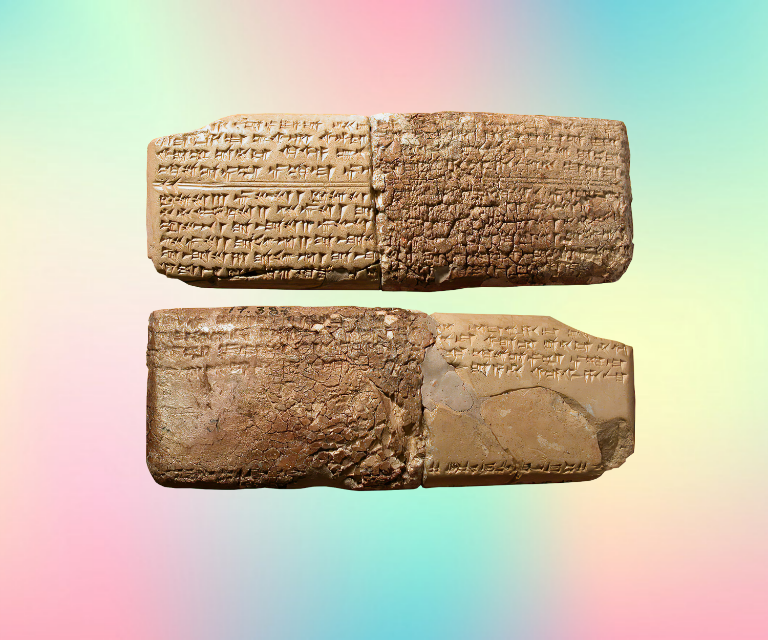Open the Youtube video and use the timestamps to quickly switch from one to the other version. Or, use the scrollbar.
Version 1
(0:00 - 1:44)
This early interpretation of Hurrian Hymn no. 6 by Anne KilmerKilmer, A., ‘The cult song with music from ancient Ugarit: another interpretation’, in Revue d'Assyriologie et d'archéologie orientale 68-1 (1974), 69-82. presumes that the song is played with harmonic dichords. There is also a chorus that is repeated several times.
Version 2
(1:44 - 3:12)
Marcelle Duchesne-GuilleminDuchesne-Guillemin, M., Dechiffrement de la musique babylonienne: conferenza tenuta nella seduta del 15 Aprile 1977 (Rome, 1977) argues that the denoted time intervals should be played as well, resulting in a continuous melody in which many notes are subdivided (tuplets).
Version 3
(3:12 - 4:50)
This interpretation by Richard DumbrillDumbrill, R., The archaeomusicology of the Ancient Near East (Victoria, 2005). is arguably the most popular one and sees many arrangements in the (online) media. It consists of a single melody in which some repetition is involved.
Version 4
(4:50 - 6:32)
Theo Krispijn Krispijn, T., ‘Musik in Keilschrift. Beitrage zur altorientalischen Musikforschung 2, in E. Hickmann, A. D. Kilmer, R. Eichmann (eds), Studien zur Musikarchäologie Band 3 (Rahden/Westfalen, 2000), 465-479. also argues for a harmonic interpretation of Hurrian Hymn no. 6. Following the intro, three verses are repeated that have the same melody.
